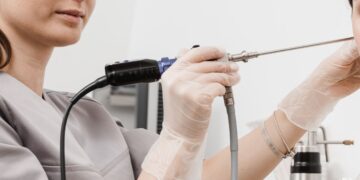Lasik, Smile, PRK: which one is good for me?

Do your glasses and contact lenses irritate you? If the desire to live an active lifestyle has occurred to you, you may have heard about laser correction surgery. However, as the term surgery crosses one’s mind, it raises a slew of issues, with so much noise about the many options (PRK vs LASIK vs SMILE) that settling on a choice and a process becomes perplexing. Those who have considered laser surgery usually come up with these three options. These surgeries are safe, effective, and well-known for vision correction. Know the exact details about PRK VS LASIK VS SMILE surgeries below:
- PRK – Photorefractive Keratectomy, often known as PRK, is the first generation of laser vision correction surgery in the history of laser vision correction procedures. Myopia, hypermetropia, and astigmatism can all be corrected using PRK. The initial layer of the cornea is softly removed with a hand tool during the PRK procedure. After that, the doctor uses an excimer laser to reshape the cornea to restore vision.
Of the three laser eye surgery techniques available, PRK has the longest recovery time. The cellular development on the top layer of the cornea (also known as Epithelium) takes roughly seven days. The smoothness that is crucial for clear vision can take two to six weeks to regenerate.
- LASIK – LASIK (Laser-Assisted Stromal In-Situ Keratomileusis) is a technique many people have heard of or are familiar with. These days, LASIK is the most commonly recommended procedure for patients. Myopia, hypermetropia, and astigmatism can all be corrected by LASIK. With the LASIK procedure, a small flap of the corneal layer is carved off with a femtosecond laser, and subsequently, the flap is replaced. The excimer laser is then used to remodel the corneal layers in the next step. A pre-LASIK checklist is required, and the corneal thickness must be within specified parameters to generate the flap, as a certain amount of depth is needed.
The treatments would be off-limits for patients with uneven or thin corneas. LASIK surgery is a safe and dependable option, but it is much more complicated than SMILE. Flap-related issues arise after the treatment because two lasers work together to create the initial flap. The possible post-procedure complications are striae or micro-level folding, astigmatism, restricted epithelial tissue regeneration, tissue irritation, and dry eye problems.
- SMILE — The FDA-approved SMILE treatment (Small Incision Lenticule Extraction) is an advanced choice in the field of laser correction therapy. In terms of laser vision correction, SMILE provides a one-step treatment. When comparing PRK vs SMILE or LASIK vs SMILE, one significant distinction is that the excimer laser is not utilised in operation; instead, a Femtosecond Laser is used to create a tiny incision in the cornea through which a little corneal portion is removed. This helps to rebuild the cornea and restore vision.
When we compare PRK vs Lasik vs Smile, the excimer laser is used in PRK and LASIK to reshape the cornea. Even though SMILE’s clinical trials showed it as safe and accurate as LASIK in terms of safety and precision, SMILE surgery is now only offered for nearsightedness and astigmatism.










